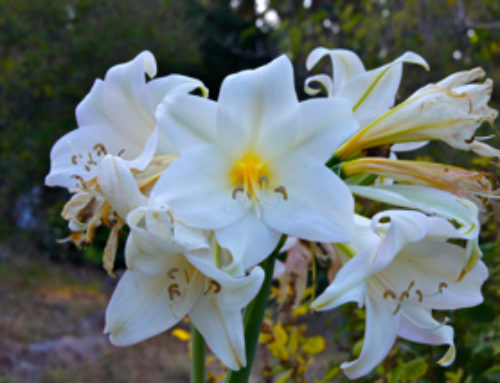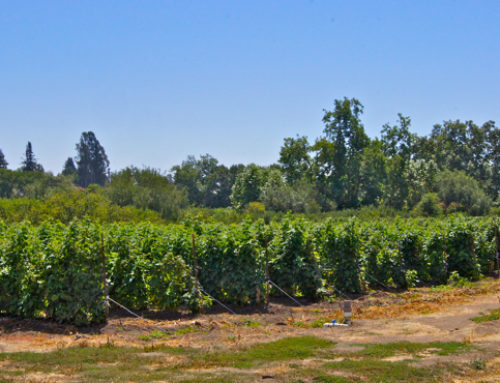The farm’s winter fields are a patchwork of cover crops and winter veggies. Take a walk through them with us and see all the changes. Click on the highlighted text to reach related previous posts.
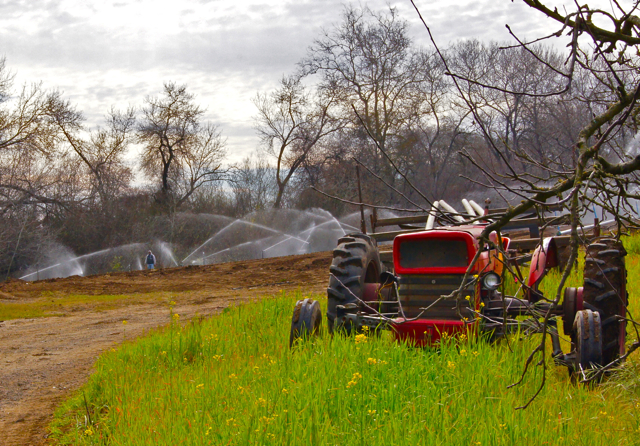
It seems strange to have to irrigate in January yet there were only a couple of brief rain storms in November and December and none this month, so using groundwater is a must if we’re to have anything to harvest in the coming weeks.
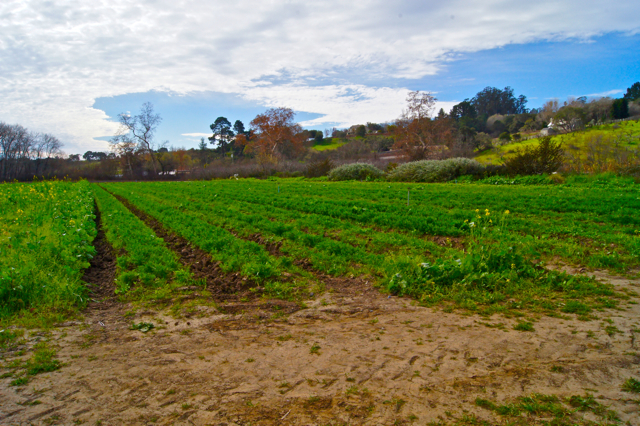
These rows of carrots are where cherry tomatoes were growing just a few months ago. Some of you may remember them from our Tomato U-picks.
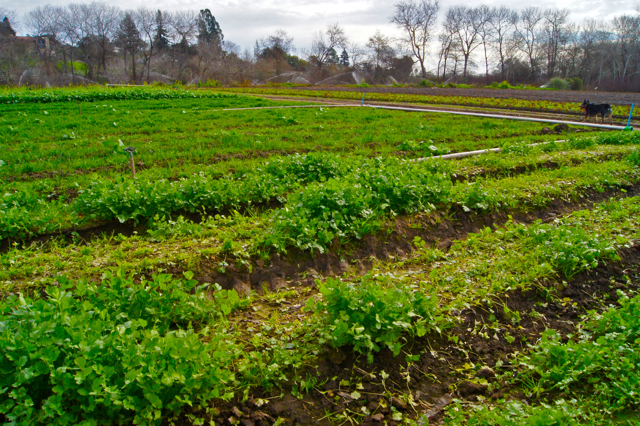
This field was full of pepper plants in the summer, while the field beyond was full of dry-farm tomatoes. Now there are rows of cilantro, onions, carrots, and purple top turnips in the near field, with chard in the one beyond.

Though the fields in the first photo were being irrigated with sprinklers, drip irrigation is becoming more necessary to help conserve precious water.
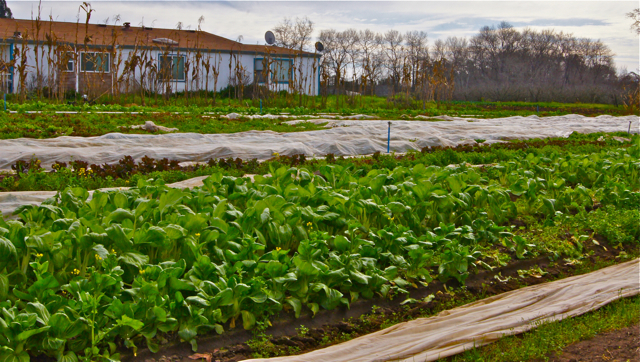
In summer, this field grew a mix of herbs, peppers, and tomatillos. Now it is full of greens, including a variety of pok choi (in the near ground) that made it into some of last week’s shares as a substitute for a couple of other veggies that came up short.

These year-old raspberry canes that were lush and green in summer are getting pruned back.

This was a field of 2-3 year old raspberry canes. They’re gone now, and the rows are full of recently transplanted greens. Some have been covered to protect them from colder night time temperatures.

Berry canes are not the only thing getting pruned this month, so are apple trees like the old Newtown Pippin pictured here.

While some apple trees on the farm grow without guidance others, like the Fujis pictured here, are espaliered – trained to grow along wires that support the weight of the apple crop and make harvesting easier.

Near the trees pictured above are next season’s strawberry fields – the farm plants over 80,000 strawberry starts at the end of the year in preparation for the April-Oct fruiting season.

Cover crops are sown in between the rows of these espaliered Royal Gala apple trees. At the end of the crop’s growth cycle, it will be disc-ed in to provide nutrients during the time the apples are growing.

These fields are a patchwork of recently plowed ones, current season rowcrops, and cover crops.
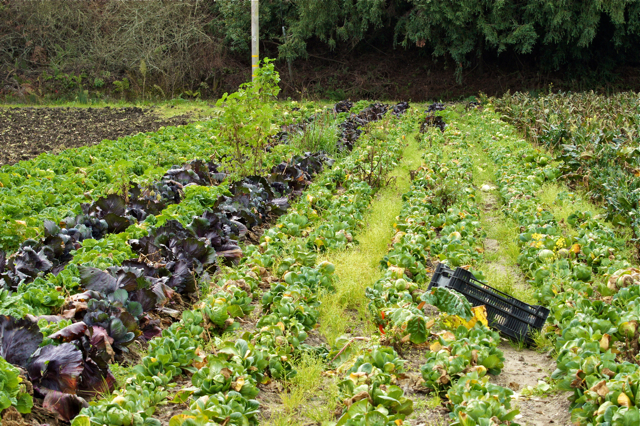
Green and red cabbage tough out the colder weather, slowing their growth (CSA members may have noticed the decrease in size of some items in their shares) and producing sugars, making them sweeter than cabbage grown in the summer season.
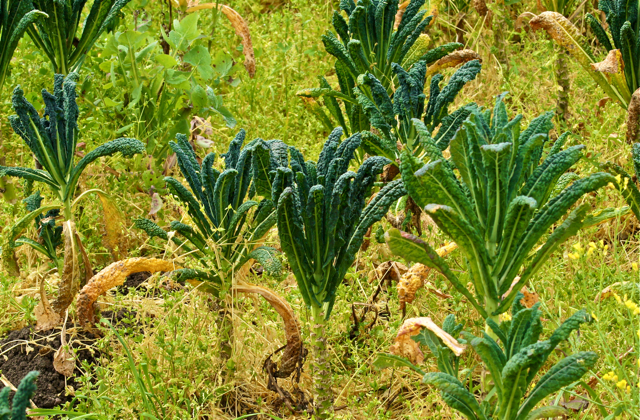
Next to the rows of cabbage are ones of kale. The Lacinato pictured here is being harvested for CSA shares. We leave the plants in the ground, harvesting just the leaves to prolong the life of the crop.

Bolting broccoli plants lend a splash of color and brightness to the muddy brown fields.
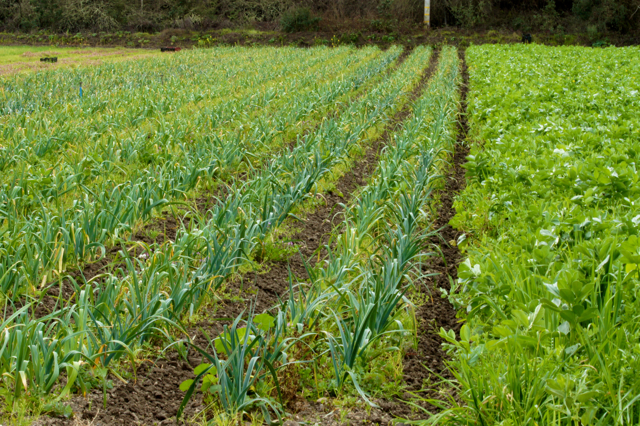
A little further along, rows of green garlic for upcoming shares are bordered on the right by a field of cover crop.

This field of cover crop leads up to an orchard of Newtown Pippin apple trees. This variety of apple was grown extensively in the Pajaro Valley for use in Martinelli’s apple cider.

Windfalls in the orchard provide food for over-wintering birds.

More cover crops are nearby, with rows of raspberry canes beyond (where the white buckets are). The small orchard to the left are apple trees that have been grafted.
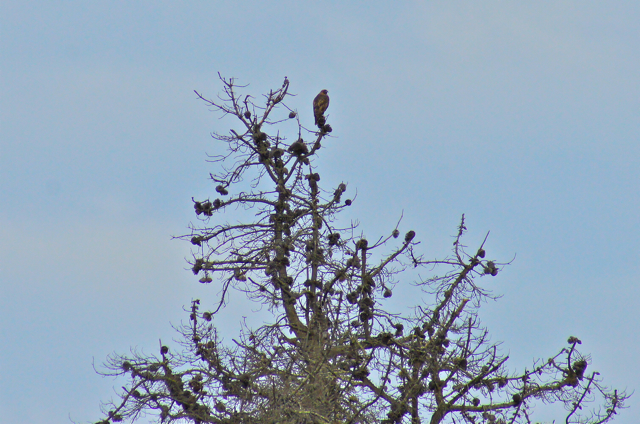
Red-tailed and -shouldered hawks are a common sight at the farm. On gopher patrol, this one is perched high in a dead pine overlooking the fields.

During winter, mushrooms, like these boletes, are common in the wilder sections of the farm.

Recently cultivated and formed rows are ready for transplants.
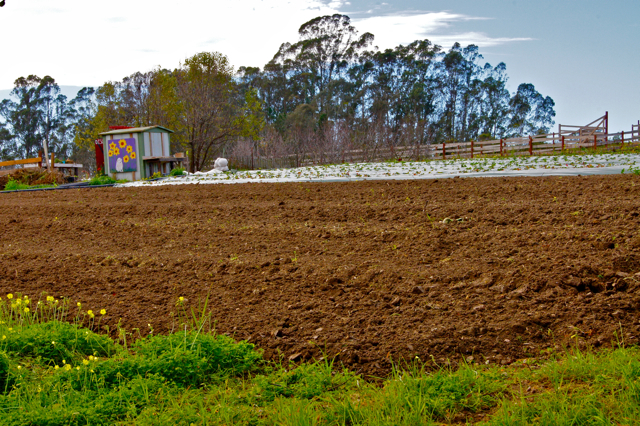
Just like the rest of the farm’s fields, the Farm Discovery fields are plowed, ready for new crops to be planted by future farmers.


